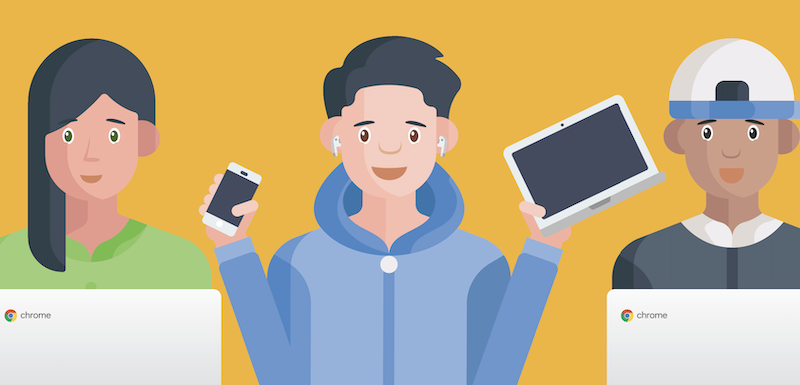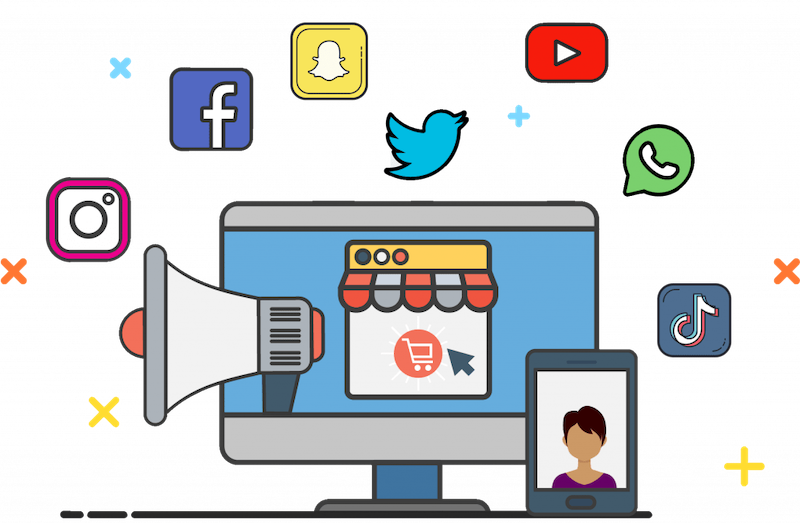One of the hottest topics in EdTech throughout the recent months has been the subject of digital citizenship (or digital literacy and what it means to be a digital citizen). What is it? How does one attain it? And is it something you can teach or only something you can learn? The answers and more follow in this week's Eduporium Weekly.
Defining Digital Literacy and Why It’s so important
Kids today will need to be proficient in many technology advances that, in previous generations, only few needed. In fact, they are often expected to master certain tech-related areas before they even reach high school. Previously, it was common for kids to enter high school with basic knowledge of Word, Excel, Power Point and email and then maybe take a semester-long computer science class at some point as an elective. In 2015, however, digital literacy is no longer an added bonus, but is trending towards becoming the bare minimum.
Building a digital foundation.
A recent article from TeachThought aimed to paint a clearer picture of just what the term ‘digital literacy’ entails. The traditional cornerstones of education—the 3 Rs—have been around for decades and while there are certainly innovative ways to teach them, they continue to have their place in classrooms as they are the foundation for learning crucial STEM skills, such as critical thinking, collaboration and communication. As time goes on, however, we have become more and more reliant on the Internet for accomplishing everyday tasks like getting news (no more buying the paper), exchanging plans or updates (no more letters or phone calls) and even shopping (who wants to actually go into a store?)
How to become a digital citizen.
That’s not to say that students must learn how to share their locations or the most creative updates to post. They can, however, become fluent in 21st century language by learning concepts like coding so they're better positioned to succeed. When they are absorbing the proper instruction, students are able to then meaningfully engage with online content, adding an ‘E’ to the backside of the 3 Rs. e-Everything—whether it’s e-Learning, e-Shopping or e-Succeeding—is going to likely require a specific set of knowledge in the coming decades. For that reason, among others, students need to become fluent in web literacy now.
Classroom Design Could be as Important as Material or Teachers
We spend hours each week stating that students must adapt to modern times by having access to modern learning tools. And if we’re not saying (or thinking) that, we’re probably saying that teachers need to become more innovative, integrate technology into the lessons or engage students more thoroughly. What if, however, another everyday aspect of education could be changed for the better? The classroom is a potentially powerful space and has so much potential for students or their teachers.
How classroom design aids digital learning.
By designing classrooms that are more conducive to the specific needs of the students it surrounds for 180 days, those inside will become more eager to learn and, with increased engagement, see better academic results. Flexibility is key for a lot of children and, fortunately, classrooms are one thing that can change on the fly. Flexible classrooms allow students to choose what learning space and what learning methods work best for them without any requirements. By allowing students to work together, communicate more freely and engage in critical thinking, there is evidence showing that grades improve. They also participate more in class discussions and projects and achieve increased overall happiness during the school year.
Developing into a digital citizen from a young age.
Instead of requiring students to sit at one desk all day and not thinking twice about it, some teachers have adopted policies that allow students to choose any spot in the classroom so long as they can see, hear and are safe. With additional freedom, students will eventually put a great amount of thought into selecting the spot that suits them perfectly. Believe it or not, students know their preferences—even at as young as six years old. For this to work, teachers must have a logical vision for how their class will continue to succeed. They also must be willing to part ways with traditional learning equipment, such as textbooks and notebooks, as well. Changing things up a bit could do wonders for participation, collaboration, relationship building, engagement, and retention among students. When given the chance, students will usually choose what’s best for them.

EdTech Innovations for Special Education
It seems that almost weekly, educators are revealing new discoveries based on their experimental classroom implementations. One of those recent findings involves a few new ways in which assistive technology can benefit special education students. For a while now, teachers and education leaders have been trying to find the best ways for students with learning differences to use technology to learn because traditional schooling has not always served them as well as it generally does for other students.
How EdTech helps students become digital citizens.
Innovations in educational technology are now being looked at with the hope that they can help students with specialized needs proactively learn and efficiently retain material so that they can pass classes. Educators already try to provide the least-restrictive learning environment as possible for these students, but this might not involve allowing special education students into the mainstream classroom for at least part of the school day so that they can receive the same level of instruction as their peers. If this does not sound like the best solution, that is probably because it isn’t. What would be better though?
Different avenues for engaging students.
The general consensus is that the ideal solution for special education students is personalizing their education. As schools move toward integrating technology into their classrooms, there are a host of opportunities for teachers to assist these students with a number of digital tools and apps that will help them learn. By using technology to make their learning experiences more personal, learning rates should increase with the simplified interaction. The multimedia aspect of being a digital citizen is thought to allow students to digest material much more effectively because of these simplified interactions as opposed to complex interactions they would be having with groups in the traditional classroom. If this sounds like something you’d like to try, let us know how it goes!
The Importance of Young Students Learning Digital Citizenship
While it’s not officially in the curriculum yet, it very well could be a mainstay in schools sometime soon. Digital citizenship, the practice of conducting oneself with proper grace and etiquette on the Web, is something that all children using the Internet should be familiar with, but few are. Stop by a student’s social profile and it won’t take too long to see that they probably aren’t trying too hard to uphold a respectable reputation based on some of their language or photos. What they don’t realize, however, is how their public decisions now could affect them later.
How students become digital citizens.
The best approach in teaching children how to be upstanding digital citizens is to begin early. Before they fully immerse themselves in the online world and see all of the negativity that’s permanently out there, set aside some time to teach them how to properly absorb what they read and watch and direct them on how to avoid making the same mistakes. While still young, kids are obviously very impressionable, which could work either with you or against you. By reinforcing the need to conduct themselves properly online or risk disappointing their teachers and families, they should think twice. If they see trendy posts, however, and haven't learned about avoiding wrongdoing, they may follow the poor examples. Eventually, questionable social media representation could come hurt them since employers often view them when people apply for jobs.
How teachers can best educate students.
Some ways to educate students include becoming educated about the situations yourself. Face-to-face dialogue between teachers and kids about the importance of net safety are useful ways for teachers to develop better lessons and create a more engaged classroom by understanding student preferences. In the same way, it’s a good idea to pick the brains of fellow educators who have been there before. Chances are, they’ve been faced with similar roadblocks and can offer first-hand advice. Finally, as with most things in education, trends for teaching digital citizenship and safety change from time to time. Make sure you’re staying up to date with the latest practices to keep students safe in the 21st century.

The Teacher’s Guide to Using an iPad in Class
If you’re one of the thousands and thousands of modern-day teachers aching for a little technology to supplement your in-class material and have gotten approval from administrators as well as something like, oh, I don’t know, maybe an iPad, you might be wondering which direction to go now. First and foremost, you and your students need to use EdTech to enhance the first part of the word: education. If used correctly, it can do wonders for children by increasing engagement, interest and collaboration.
Using digital skills every day.
If you’re not exactly a tech-savvy teacher and think that students might be able to use the device better than you, that’s okay—don’t get discouraged. They may know how to search for a video or send an email, but you are the teacher after all. You’re wise and you came prepared. Before bringing the iPad to school, research how to best use it for education and becoming a digital citizen. There are thousands of apps designed just for that purpose and you’ll be able to pick the best ones for whatever it is that you’re covering. Students can use iPads to consume information, collaborate on finding solutions and produce results in the form of tech-centered projects.
Using apps in digital citizenship.
There are, of course, many different ways to use the iPad once you’re comfortable enough to bring it to school. For learning purposes, there are apps that help students learn to read while sharing stories amongst each other or encourage creativity by challenging them to create their own stories. There are also apps that allow older kids to view and download different types of files or to create fun and interactive presentations without a desktop computer. To sum it all up, the world is much more accessible with technology and education becomes enhanced when used properly.
For the latest EdTech, STEM, and 21st century education news, follow us on Twitter and Instagram. Like us on Facebook, too, or sign up for our newsletter for our latest product announcements and offerings. If you have an idea for an Eduporium Weekly theme, send us a message on social media or comment below.



